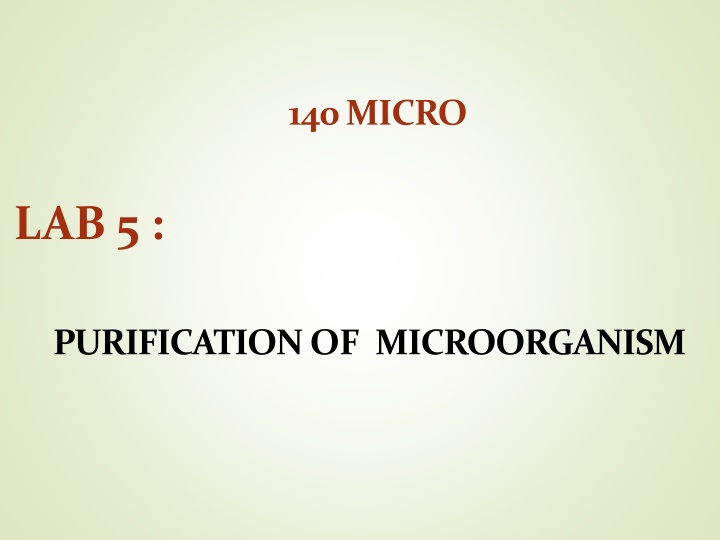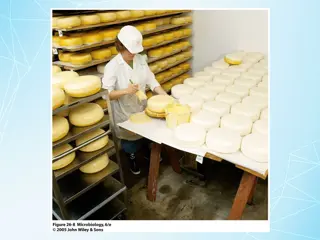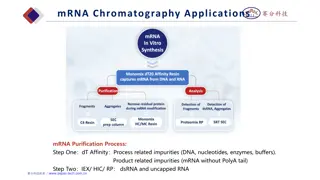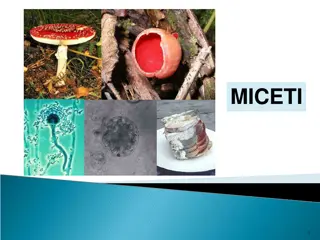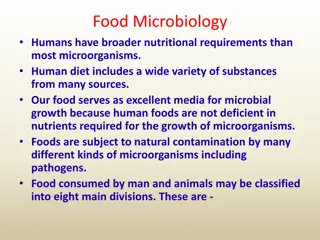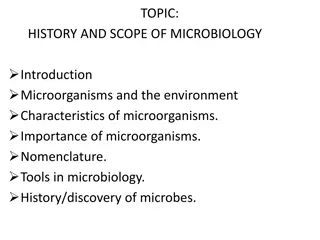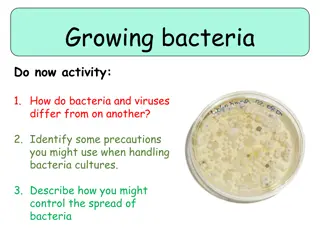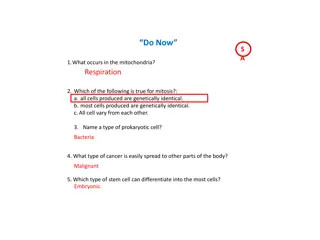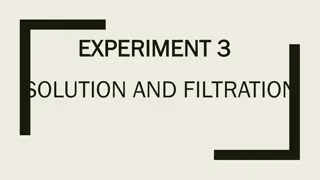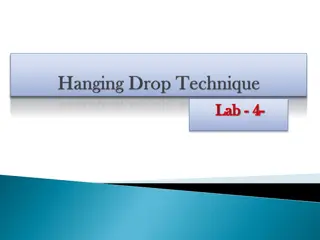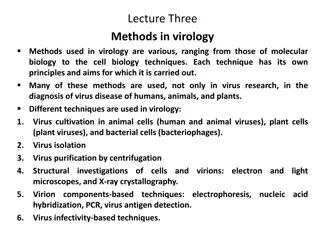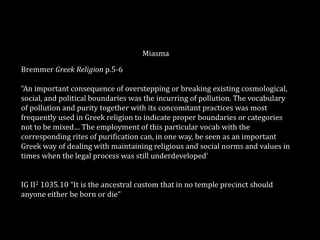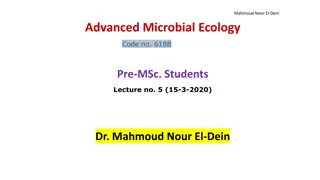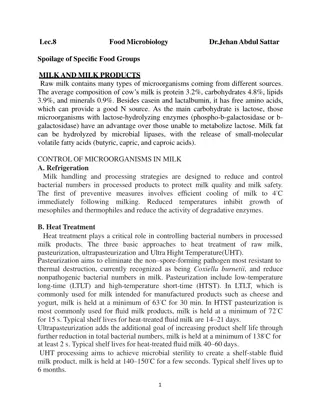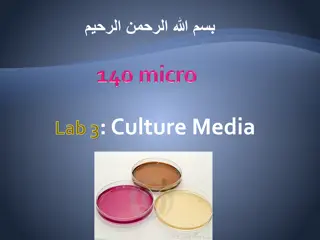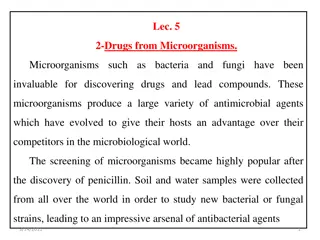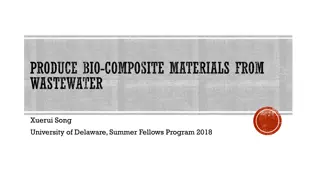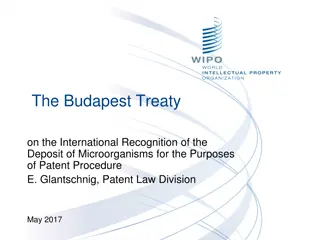Purification of Microorganisms: Cultures and Techniques
This content covers the purification of microorganisms through culture techniques such as streak plate method and use of cork borers for fungi. It describes the process of obtaining pure cultures and differentiating between contaminated and pure cultures. Various images illustrate the steps involved, from inoculation to observing colony characteristics. The article emphasizes the importance of purification in microbiology research and highlights methods used for both bacteria and fungi.
Uploaded on Feb 21, 2025 | 1 Views
Download Presentation

Please find below an Image/Link to download the presentation.
The content on the website is provided AS IS for your information and personal use only. It may not be sold, licensed, or shared on other websites without obtaining consent from the author.If you encounter any issues during the download, it is possible that the publisher has removed the file from their server.
You are allowed to download the files provided on this website for personal or commercial use, subject to the condition that they are used lawfully. All files are the property of their respective owners.
The content on the website is provided AS IS for your information and personal use only. It may not be sold, licensed, or shared on other websites without obtaining consent from the author.
E N D
Presentation Transcript
140MICRO LAB 5 : PURIFICATION OF MICROORGANISM
Culture Theorganismgrowing onthemediaplateis calledas culture. Colony Thenumberof cellsof anyorganism living together.
Culture Types of 2-Contaminated culture 1-PureCulture Only one type of microorganism growing on the media plate More than one type of organism growing on the mediaplate
Purification ofFungi: Useacork borerorpasturepipet. Flamecork borerusingalcohol 70% andallowtocool. Cutfewdiscsfromtheedgeof anactivelygrowing fungal colony. Inoculateit(surfacefacingdown)onthecenteranother mediaplatewiththehelpof flamed forceps Incubate it for 3-5days Purecultureof theorganismwillgrow. 1. 2. 3. 4. 5. 6.
Purification of Bacteria: Streak plateMethod Streak inoculumontooneportionof theplate Sterilize theloop Streak through the first inoculum andspread into secondsection Repeat severaltimes Incubate it for 24 h., asinglecolony will be observed.
Result 1 1 2 4 Nice isolation! 2 3 4 Streak pattern 3 Bacterial growth pattern
Which streak plate culture started as a pure culture. How can you tell?
Watch https://www.youtube.com/watch?v=_1KP9zOtjXk
Characters of colony Form Whatisthebasicshapeof thecolony? Forexample,circular, filamentous,etc. Margin Whatisthemagnifiedshapeof theedgeof thecolony? Elevation Whatisthecrosssectionalshapeof thecolony? Turn the Petridish onend. Surface Howdoesthesurfaceof thecolonyappear? Forexample, smooth, rough, dull , wrinkled etc. Pigmentation For example, white, red, purple,etc.
Mostbacterialcoloniesappearwhite,cream,oryellowin color,andfairlycircularinshape.
Inoculated AgarSlant 1.Label thesterilenutrientagarslantwiththesource of the culture. 2.Sterilize theloop. 3.Remove a loopful of broth from the culturetube. 4.Insert the loop into the sterile agar slant tube and starting at the base of the slant, draw the loop upthe slant. Donot penetratetheagar. Sterilize theloop. 5.Incubate theslantat 37C for24-48hours. 6.Observetheslant forgrowth.
Result InoculatedAgarSlant,afterincubation
Liquidmedium In a liquid medium, the region in whichthe organism grows depends on the oxygen requirement of that particularspecies.
Liquidmedium *Turbid *Pellicle ((thickgrowthatthetopof thetube)) *Sediment
Howtocharactersof colony? https://www.slideshare.net/HiwrHastear/culture- characteristic-of-bacteria
The The End End
